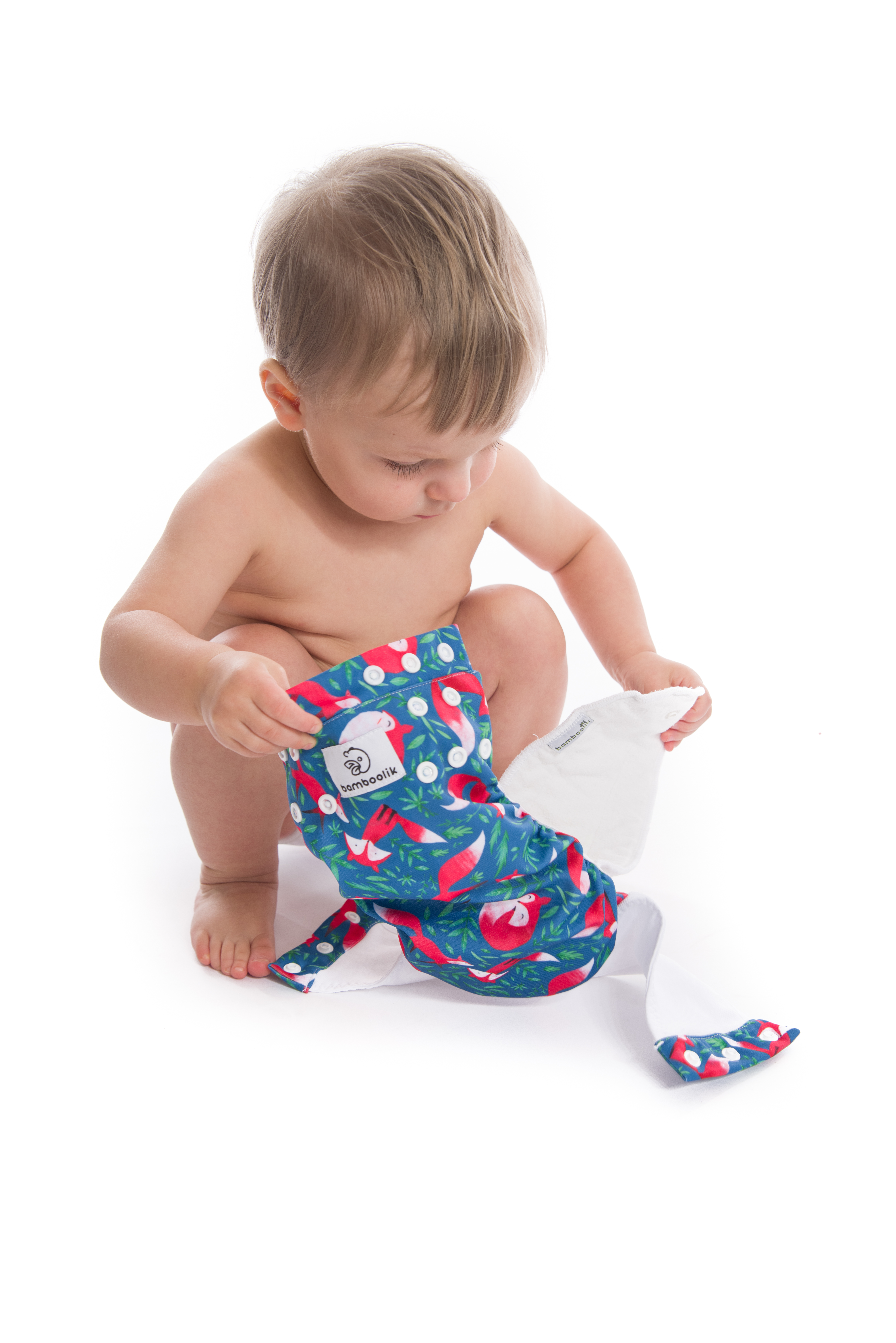Natural Potty Training
Diaper-Free over the Summer: Natural Potty Training
How to approach toilet training with your toddler and when it’s the right time to start? What about just ditching diapers and never looking back. Summer is the best season for potty training attempts. Have a look at our tips.
Natural Potty Training
Potty training around the world differs and approaches to this milestone in a toddler’s life vary across cultures. Rumour has it that native Americans used to potty train their babies the most natural way. The whole process was based primarily on communication with the baby, focusing on reacting to the baby’s signals and respecting their needs. Sounds pretty modern to us! Today’s cool parenting styles all enhance respectful communication, not forcing your child to do anything they’re not ready for.
What does this natural potty training approach entail in practice?
Natural Potty Training: Step No. 1
Communicating. Explaining.
We think respectful parenting requires always talking to your child first before you attempt to teach them any new skills. Even when you think your child can’t understand what you’re telling them because they don’t speak yet. Of course they understand! Patiently explain to your toddler what you want them to do.
- Tell your toddler that they’re a big boy/girl already! Kids always take any mention reagarding their maturity as a compliment.
- Tell them big kids use the potty when they pee or poop. Or the toilet (if you happen to have a potty training seat).
- Tell them (even better: show them) that you also use the toilet. The thing is, if your toddler has never seen you using the toilet, they might think you also wear diapers. Don’t be shy and let your child observe you. Children learn the best by mimicking. Let them.
- Tell your child that you’re going to take their diaper off so that they can start using the potty.
If your child tells you no, respect that. Forcing your toddler to do something they don’t want to do rarely works and has nothing to do with respect. Let it be and try asking again after a while. Eventually, you will get a yes.
Natural Potty Training: Step No. 2
Then just take off your toddler’s diaper.
And let your baby pee. They will notice that something uncommon is happening — children at this age are fascinated by literally anything,
It’s time! Grab the potty and put it under your toddler. Tell them to do it in the potty.
Natural Potty Training: Step No. 3
Repeat step No. 2, reserving a steady place in your house for the potty. Tell your kid to get to it when they need to go.
Praise successful attempts, don’t mention the failures much. Never rush it. Every child is unique and needs to take their own time. Be thorough — once you take the diaper off, don’t put it back on after a few failed attempts. You’d only confuse your child if you do that.
We recommend trying this potty training method in a period of time when you can be at home most of the time. Accidents are bound to happen and we suppose you don’t want to clean someone else’s house. Or worse, a public space.
If you need some sort of security (e.g. you need to go for a car ride and don’t want your car seat to get soiled), use potty training pants instead of a regular diaper. For extra security, use a waterproof changing mat under your baby.

Benefits of Natural Potty Training
It’s natural. Pretty much effortless (on your baby’s end). It doesn’t frustrate your child. It enables them to fully realise their elimination — which is a solid base for them to start controlling their elimination.
When to Start Potty Training
Summer and warmer months in general are perfect for first potty training attempts. You can let your baby run around half naked without being worried they’d catch a cold.
Don’t start with potty training when your child is not ready. These are signs of potty training readiness:
- Your baby pees just a few times a day in larger doses. They don’t pee just a little dozens of times a day (which is typical for newborns and smaller babies).
- When they go to number 2, your child typically gets out of sight, aside from other people. They seek privacy.
- Your toddler is older than 18 months. It’s rare for younger children to be able to realise their elimination.
The first two points are crucial, the age is a flexible milestone. Some children tick the first two boxes when they’re three years old. No shame in that, every child is unique.
Night potty training is another story. It’s absolutely OK for your child to need an overnight diaper longer. Statistics say that half of all the 5-year-olds can’t go without a diaper every night. Night wetting is considered normal until the age of 6. That’s why potty training pants come also in larger sizes — for kids who are perfectly potty trained during the day but still need some security at night.
Looking for more toilet training tips? Read our article on how to potty train your baby stressfree. Or tips what to do when potty training your baby and what you should avoid.
|
Communication is Key. In Everything Elimination Communication creates a very solid base for effortless potty training. It enables you to get to know your child’s needs and recognise their elimination signals effectively. Even with newborns. Read more about Elimination Communication here>> |

